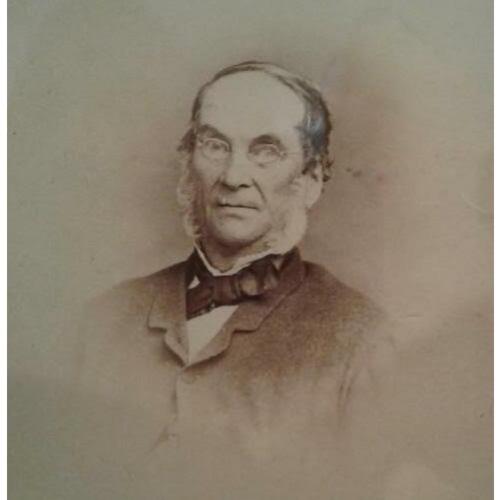![Charles Drolet [1795-1873] CLG65,S7,SS1,D1,P10, Fonds Famille Bourassa - Archives nationales à Montréal Original title: Charles Drolet [1795-1873] CLG65,S7,SS1,D1,P10, Fonds Famille Bourassa - Archives nationales à Montréal](/bioimages/w600.24714.jpg)
Source: Link
DROLET, CHARLES, lawyer, politician, office-holder; b. in Quebec, 8 May 1795, son of Charles Drolet and Angélique Hill; d. in Quebec 22 Sept. 1873 and was buried three days later in Notre-Dame de Belmont cemetery, Sainte-Foy (Quebec City).
Charles Drolet was admitted to the bar of Lower Canada on 28 April 1827 and practised at Quebec. There on 27 July 1830 he married Marguerite Quirouet. The couple apparently had no children, but Charles had previously fathered an illegitimate son named Charles-Papineau, born 2 Jan. 1828 to an unknown mother. In February 1836, Drolet, assisted by Louis-Joseph Papineau, defeated Robert-Shore-Milnes Bouchette, who was a Patriote friend, in a by-election for Saguenay County. As a member of the Association des Frères-Chasseurs, Drolet was in favour of armed rebellion but he did not participate in the first uprising. On 1 July 1838, just before the exiles to Bermuda sailed from Quebec, Drolet smuggled supplies to their ship. After Lord Durham [Lambton*] resigned in October 1838, Drolet disturbed the authorities by calling a public meeting in Saint-Roch, Quebec City, to thank Lord Brougham and John Temple Leader, the British politicians believed responsible for the resignation.
On 16 Oct. 1838, Drolet executed his boldest scheme, the escape from the Citadel of two prominent Patriote prisoners, Edward Alexander Theller* and William Wallin Dodge [see John G. Heath]. Sir John Colborne* issued a warrant for his arrest, and Drolet fled Quebec for the United States border. He stopped for a night in Saint-Gervais with his first cousin (also his wife’s uncle), legislative councillor François Quirouet*, and was arrested there by a militia squad on an order signed by his host. Near Quebec, Drolet cleverly persuaded a guard to permit him to visit his mother, and he escaped to the United States. At Rouses Point, Drolet joined Patriote friends, and on 5 December Robert Nelson named him one of 12 councillors of the proposed republic of Lower Canada.
When the Patriote cause, in which Drolet had played a useful but limited part, collapsed in 1839, Drolet was admitted to the bar of New York at Buffalo, then moved to Detroit where he practised for eight years. After the general amnesty of 1849 Drolet returned to Montreal. In August 1850 he moved to Quebec, where upon the recommendation of Louis-Hippolyte La Fontaine*, Drolet, an unpopular choice among many government supporters, received a minor imperial judicial appointment, clerk of the Court of Vice-Admiralty, Quebec. Soon after La Fontaine moved to the Court of Appeal in July 1854, Drolet received his second appointment, deputy clerk of the Court of Appeal. He retained both positions until his death.
[R.-S.-M. Bouchette], Mémoires de Robert-S.-M. Bouchette, 1805–1840; recueillis par son fils Errol Bouchette et annotés par A.-D. de Celles (Montréal, [1903]), 40, 85. “Papiers de Ludger Duvernay,” Canadian Antiquarian and Numismatic J. (Montreal), 3rd ser., VII (1910), no.2, 94. Le Canadien (Québec), janv., mars 1836; janv., mai 1850. Mélanges religieux (Montréal), 27 août 1850. Montreal Gazette, 1 Jan., 16 Feb., 15 March 1836; 10, 16 Oct., 15 Nov. 1838. Le Nouveau Monde (Montréal), 4 sept., 27 sept. 1873. L’Opinion publique (Montréal), août, 3 oct. 1873. Canada directory, 1857–58. Desjardins, Guide parlementaire.
L.-N. Carrier, Les événements de 1837–1838 (Beauceville, Qué., 1914). Christie, History of Lower Canada. Fauteux, Patriotes, 220–21. E. C. Guillet, The lives and times of the Patriots; an account of the rebellion in Upper Canada, 1837–1838, and the Patriot agitation in the United States, 1837–1842 (Toronto, 1938), 128. P.-G. Roy, Fils de Québec, III, 70. Télesphore St-Pierre, Histoire des Canadiens du Michigan et du comté d’Essex, Ontario (Montréal, 1895). E. A. Theller, Canada in 1837–1838, showing by historical facts, the causes of the late attempted revolution, and of its failure; the present condition of the people, and their future prospects, together with the personal adventures of the author, and others connected with the revolution (2v., Philadelphia, 1841). Tremblay, Histoire du Saguenay. [J.-.B.-H. Brien], “Un document inédit sur les événements assez obscurs de l’insurrection de 1837–1838,” Canadian Antiquarian and Numismatic J. (Montreal), 3rd ser., V (1908), no.1, 13. Victor Morin, “La ‘république canadienne’ de 1838,” RHAF, II (1948–49), 483–512. Antoine Roy, “Les Patriotes de la région de Québec pendant la rébellion de 1837–1838,” Cahiers des Dix, XXIV (1959), 247–48. P.-G. Roy, “L’évasion de Dodge et Theller de la citadelle de Québec,” Cahiers des Dix, V (1940), 121–44.
Revisions based on:
Bibliothèque et Arch. Nationales du Québec, Centre d’arch. de Québec, CE301-S1, 8 mai 1795, 3 janv. 1828, 27 juill. 1830, 25 sept. 1873; CN301-S33, 20 juill. 1872. Claire Paradis-Rioux, Charles Drolet, 1795–1873, Ronald Macdonald, 1797–1854: histoire et généalogie (Montreal, 2017).
Cite This Article
Carman Miller, “DROLET, CHARLES,” in Dictionary of Canadian Biography, vol. 10, University of Toronto/Université Laval, 2003–, accessed April 14, 2025, https://www.biographi.ca/en/bio/drolet_charles_10E.html.
The citation above shows the format for footnotes and endnotes according to the Chicago manual of style (16th edition). Information to be used in other citation formats:
| Permalink: | https://www.biographi.ca/en/bio/drolet_charles_10E.html |
| Author of Article: | Carman Miller |
| Title of Article: | DROLET, CHARLES |
| Publication Name: | Dictionary of Canadian Biography, vol. 10 |
| Publisher: | University of Toronto/Université Laval |
| Year of publication: | 1972 |
| Year of revision: | 2019 |
| Access Date: | April 14, 2025 |



